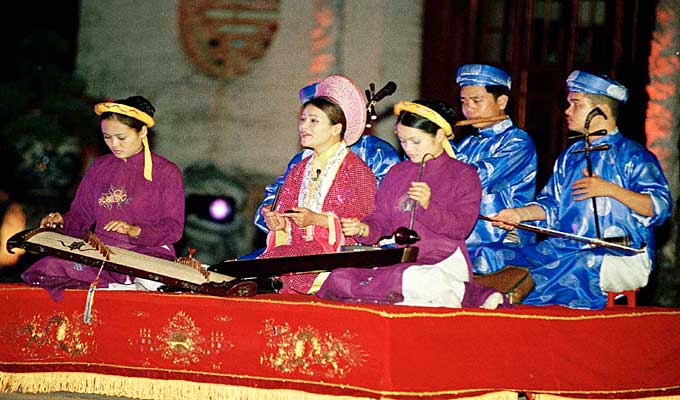Hue singing has been recognized by the Ministry of Culture, Sports and Tourism as a national intangible cultural heritage. Many efforts have been made to preserve and promote this unique art form.

Over the past three decades, performances of Hue singing on the Huong river have become a major tourist attraction. But in recent years, the art has become commercialized.
Ancient Hue songs have been gradually replaced with chants and other folk songs. So, more efforts are needed to preserve the old songs and traditional ways of performing Hue singing.
Artist Thu Hien who has performed Hue singing for more than 20 years says more attention should be paid to Hue vocal artists.
“The pay for artists is very low so our lives are very difficult. But Hue singing has become more popular. We hope that we can preserve the art form and improve the quality of our performance to meet audience’s demands,” Hien shared.
Since Hue singing was recognized as a national intangible cultural heritage in June 2015, Hue authorities, relevant agencies and the public have paid more attention to preserving and promoting it.
But it’s a challenge to inspire younger artists to continue the tradition while senior artists like Minh Man, Thanh Luong and Kim Vang are getting old. The Hue Arts and Culture College and Hue Conservatory of Music are the two centers teaching Hue singing.
Artist Vo Que said it was important to compose new versions of the Hue singing style. “Performances of Hue singing on the Huong river have inspired a lot of people. The lyrics of the songs need to be refined to become more contemporary and more efforts should be made to promote this genre,” Que noted.
There are more than 400 artists and musicians performing on the Huong river.
Thua Thien Hue province has recently issued a regulation under which each performance must be 60 minutes long, accompanied with three musical instruments such as 36-stringed guitar, two-stringed guitar, moon-shaped guitar, monochord and flute, and involve 7 artists and musicians on single boat and 8 artists and musicians on double boat.
Deputy Director of Thua Thien Hue Provincial Department of Culture, Sports and Tourism Cao Chi Hai said it was difficult to perform the academic tunes or classic tunes of Hue songs on a boat, because of the time of performance is limited.
Hai stressed that old tunes of Hue songs should be taught during the training of younger artists. Hai suggested that the best way to preserve and promote Hue singing was to perform it at chamber.
“Hue singing has been recognized as a national heritage. So we will do our utmost to improve the quality of performances on the Huong river. The Municipal Department of Culture, Sports and Tourism will work with local authorities and clubs to restore Hue singing and perform it in the chambers of palaces and ancient garden houses,” Hai added.
In an effort to promote the genre, Thua Thien Hue provincial authorities are collecting old songs and tunes, organizing councils to review the quality of performances, and honoring artists for their contributions to preserving and promoting Hue singing.